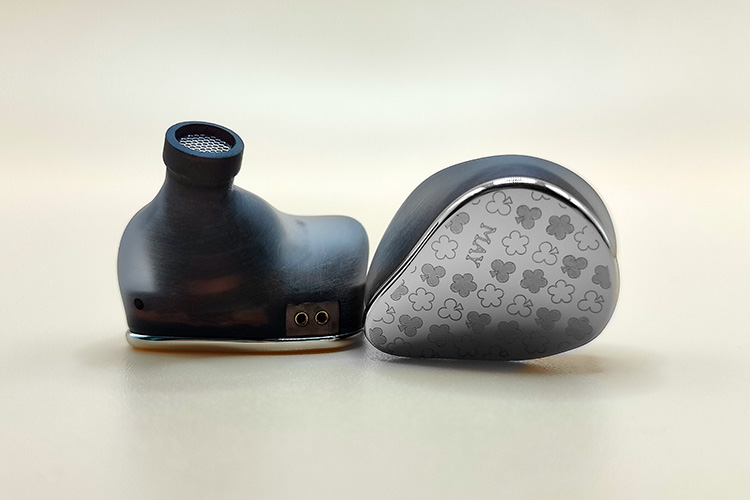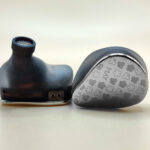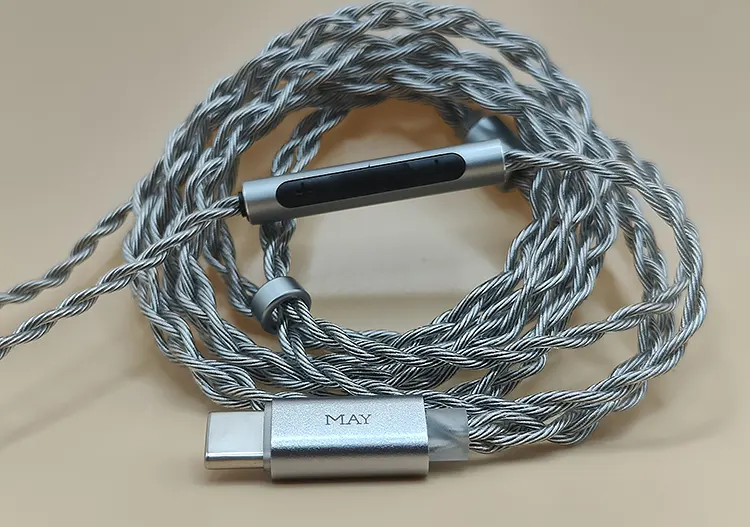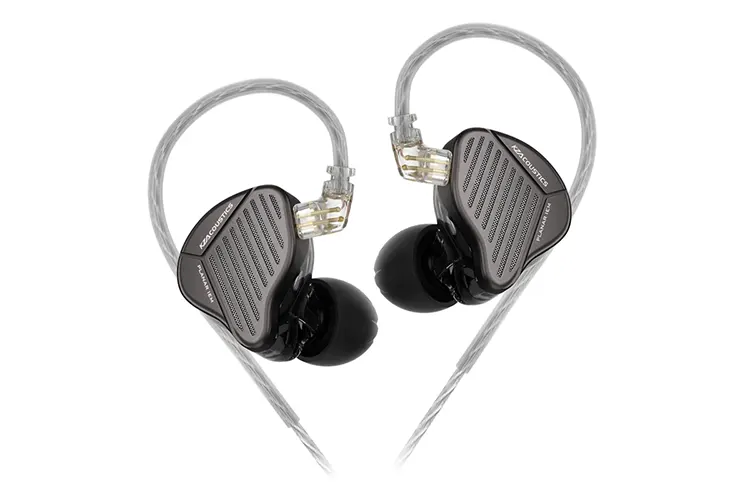Today, Kurt reviews the MOONDROP MAY, which is an affordable dual dynamic and planar driver hybrid IEM with built-in DSP technology. It is priced at $64.99 SRP but is currently discounted to $55.24.
Disclaimer: This sample was sent to me in exchange for my honest opinion. Headfonics is an independent website with no affiliate links or status. I thank MOONDROP and Shenzhen Audio for their support.
Click here to read more about MOONDROP products we have previously featured on Headfonics.
Note that this article follows our current scoring guidelines which you can read here in more detail.
MOONDROP is a well-known audio gear maker in the industry. From the KATO on the affordable end to their higher-tier MOONDROP Variations, their products are well-regarded for their quality and good tuning.
Coming in with a new entry-level IEM featuring either 3.5mm or a USB Type C cable, we have the MOONDROP MAY which is priced at a very competitive $64.99 SRP.
This isn’t MOONDROP’s first attempt at a DSP IEM, but in today’s competitive sub-$100 market, does the MOONDROP MAY compete as well as their earlier stars?
Tech Highlights
The MOONDROP MAY has a unique 1 dynamic driver plus 1 planar driver setup. The type of dynamic driver it uses is a sapphire full-frequency design, while the planar driver is a smaller 6mm annular planar magnetic driver.
The precise driver grouping is the dynamic driver for the lows and the mids and the planar driver handles the treble and air region with a 2-way crossover.
The newly made sapphire dynamic driver promises to deliver natural and classic timbre. Meanwhile, the annular planar driver aims to handle anything above 8kHz to provide lower distortion and improved smoothness in the treble.
Design
The MOONDROP MAY has a one-of-a-kind faceplate design. Depending on how you see it, it uses a club-like design similar to those used in a deck of playing cards or a four-leaf clover.
The shell is black and translucent. If the light hits it at the right angle, the stacked dynamic driver and planar driver’s silhouette will be visible.
Going back to the faceplate design, it’s a shiny piece of art. It seems like MOONDROP has grown fond of using shiny faceplate designs for their releases that year.
The club pattern on the faceplate is textured so I make out the shape of the clubs as I run my finger across them. There’s a variation for the club pattern though. Some are filled in with stripes, while the others are just outlines.
Comfort & Isolation
The comfort of the MOONDROP MAY is excellent. Its small form factor will fit anyone’s ear.
Its shell size is similar in length to the Sennheiser IE 200 but just slightly wider in comparison. There are also 2 vent holes on it, one at the bottom near the nozzle and one to the right of the nozzle.
As someone who can fit nearly all IEMs, even the bulky Sony IER-Z1R, this MOONDROP MAY is one of the comfiest IEMs I’ve worn. I didn’t feel any intrusiveness or discomfort with it even with 12 hours of continuous usage.
Not only is it light, but its cable isn’t heavy either so it doesn’t create any downward tugging sensation when I use it.
The isolation of the MOONDROP MAY is good. Due to how deep it goes in the ear, there is no noise leakage during use. However, you only get 1 set of black silicone tips. It’s the same type you normally get in entry-level IEMs or generic replacement tips.
These tips don’t do anything for the audio or the seal so I suggest rolling some 3rd party options.
Stock Cable
The MOONDROP MAY has a fantastic cable. It’s a shiny and pretty-looking cable but is also packed with tech including MOONDROP’s DSP technology.
The cable out of the box has a USB Type C connector. This means we have access to the MOONDROP Link 2 app to allow you to access the DSP options.
The USB Type-C cable has a powerful DAC chip. It’s capable of high-resolution PCM up to 32bit/384kHz. All forms of audio, either FLAC, lossless, or lossy, will run fine here with no issues.
The aesthetics of the MOONDROP MAY’s cable is quite gorgeous. It’s a braided silver cable with colored 0.78mm terminations to determine left from right. The USB Type C connector has the word ‘MAY’ printed on it as well.
The chin slider and divider are also silver colored, so we can see the entire cable is silver. It doesn’t rub on my clothes or add unnecessary noise and discomfort with normal usage. It’s a cable good for daily use.

Packaging & Accessories
The box itself is long and vertical in size. There is also new poster girl art for MOONDROP with the MOONDROP MAY. Inside the box, you get the standard unboxing experience. I received the IEMs, the cable, the manuals, the tips, and the travel pouch in it.
The travel pouch is a circular leather-like container with the word ‘MOONDROP’ engraved on the top. Inside the travel pouch, it looks less attractive with a misaligned fish-net pouch to put your set of tips in, but it honestly doesn’t look refined.
There’s no issue putting the MOONDROP MAY with the cable connected inside. It fits with some breathing room so it isn’t getting smooshed.
There are also a lot of guides, cards, and other papers inside it. Aside from that, there’s nothing much else but the presentation is at least quite attractive.
Sound Impressions
For these sound impressions, my listening volume was normalized around 70 dB to 75 dB with no EQ. I found this is the most optimal volume for testing audio gear while having the MAY on standard setting on the MOONDROP Link 2 app.
Bass
The MOONDROP MAY’s bass is plentiful. It’s something I didn’t feel like I wanted more or less of in any genre of music.
I would define it as a basshead level of bass rather than bass for neutral enjoyers. However, I would like to get more quality rather than quantity as it lacks a bit of texture or substance. Granted, its bass is more detailed compared to its competition, but it lacks that fine texture.
Like that slow flow of bass rumble, the MAY only gives it in one go while higher-end IEMs will layer and define it a bit more. Against similarly priced IEMs, it does slightly better in giving well-defined bass.
With overall daily usage, the bass of the MAY is perfect enough. All genres fit it well with its boomy and strong bass response.
Mids
The midrange of the MAY is clean while having a natural timbre.
The long explanation starts with female vocals. As someone whose music is 90% female vocals only, the MAY plays my music just how I like it.
I normally instantly check female vocal timbre, and I can safely say the MAY passes the natural timbre test. There’s no sharpening effect that IEMs that use planar drivers normally have.
With male vocals, I like it less. The male vocals lack weight which makes it sound unsatisfying and unresolving. They lack some fine details and, like the bass, also lack texture and a bit of air giving them somewhat of a flatter sound.
Aside from lacking micro-detail in the vocals, the overall tonal quality of the MAY is natural and clean.
Treble
Comparing it with competitor single dynamic driver IEMs, the MAY is clear sounding but lacks a bit of detail. Notes and instruments like hidden backup vocals, chimes, and cymbal sounds can be heard loud and clear here.
The treble on the MAY is relatively refined. There isn’t much harshness or excessive brightness to it at all, rather it’s smooth and clean. Instruments are given justice here. Like the vocals, there is no sharpening to it, which gives it a more natural tone and timbre.
Unfortunately, the MAY does lack resolution and airiness in the treble area. Its treble focuses more on smoothness and refinement instead of treble performance.
What’s for sure is that the MAY isn’t for those wanting maximum detail retrieval. This is more about achieving a balanced treble performance and refinement.
Staging & Dynamics
Despite using a planar for the higher frequencies, the staging of the MOONDROP MAY isn’t huge. Instead, it’s done well or slightly above average.
The width and height of its stage are fine. Not one part is larger or better than the other, so it gets the correct balance. For depth, it’s surprisingly better done than both the height and width. Despite still giving the in-head experience, there’s more depth than average.
Imaging is average as well. Instruments, and backing vocals, are placed in the correct spots.
For dynamics, it’s unfortunately done poorly. The loudness of the bass, mids, and treble can shift at times which gives that buried experience.
There are instances where any of those three will be louder than the rest. It doesn’t happen that frequently, but if I have to say then it’ll be one song every 2 albums with 10 songs.
Synergy
Efficiency
The MOONDROP MAY has an impedance rating of 30Ω and a sensitivity of 120 dB/mW. Its DSP cable sufficiently gets loud at all times.
That 120 dB of sensitivity makes it loud even if it’s low in the volume slider. TheMAY is easy to run on any device with a USB Type C port.
Compatibility
Since the MOONDROP MAY uses a USB Type C DSP cable I used a laptop, a budget phone, and a flagship phone to test it out. All these devices have USB Type C volume out capabilities.
Firstly, I tried the MAY on laptops with both Intel and AMD CPUs as well as Windows and Linux systems. The results are the same with the MAY performing well despite the changes in the hardware or software.
Secondly, I tried the MAY on an entry-level phone with a USB Type C port. Like with the laptops, the MOONDROP MAY is easily powered by it with no audible sound quality changes.
Lastly, I tried it on a flagship Android phone. The sound quality is the same as the others, which confirms that the MAY can be used with any compatible device with ease.
Select Comparisons
KZ PR1
Technical
The KZ PR1 is a full planar IEM. It uses a newly developed 13.2mm dual-cavity planar magnetic driver and an independent acoustic cavity for its N55-based double-sided magnetic circuit.
The pin configuration on here is different though. It doesn’t use a 0.78mm pin, instead it uses a 0.75m pin one.
The KZ PR1 also has two different versions. One of them is called the Balanced Edition, which has a more balanced tuning overall. Then there is the HiFi Edition, which focuses more on mids and treble.
Design
The KZ PR1 comes with a full aluminum body. It has a hollow grill as the vent on the faceplate. The faceplate is split into three parts. Two of them have branding text, while the other one, which is the largest, has the vent grill design.
The KZ PR1 is on the medium to large size. It houses a big 13.2mm so that medium to large housing makes sense. It has two color options, one in black and one in silver. Along with that, there’s also an option for a cable with a microphone or no microphone.
The cable it comes with is a white silver-plated cable. The feel of the cable is normal and works perfectly fine, but it doesn’t have any unique branding or designs.
Lastly, for comfort and fit, I’d still give it to the MAY’s smaller fit which is much better for all ear types and sizes.
Performance
Starting with the bass, the KZ PR1 has a lot of bass, around 4 dB to 5 dB more than the MOONDROP MAY. But in exchange for that bass boost, everything else sounds muddy.
There is a very audible bass bleed into the mids that I’ve heard in each song which the MAY avoids. The bass in the MOONDROP MAY is less potent but you feel the rumble and slams. The KZ PR1 doesn’t have that sense of rumble or slam.
Their mids are hard to compare with how recessed and recessed the vocals in the KZ PR1 are. I did not get any satisfaction with how the KZ PR1 presents vocals. In comparison, the MAY has tonally correct and natural timbre in vocals.
The treble is where the KZ PR1 shines. It simply has a lot more detail retrieval than the MAY. I hear all the subtleties in the instruments, backing vocals, and more that I couldn’t properly hear in the MAY. The exception for this is that I am still unable to get proper airiness in the vocals.
The big problem in the KZ 1R treble is sibilance. It has peaky and sibilant treble that I can’t ignore and something which the MAY avoids.
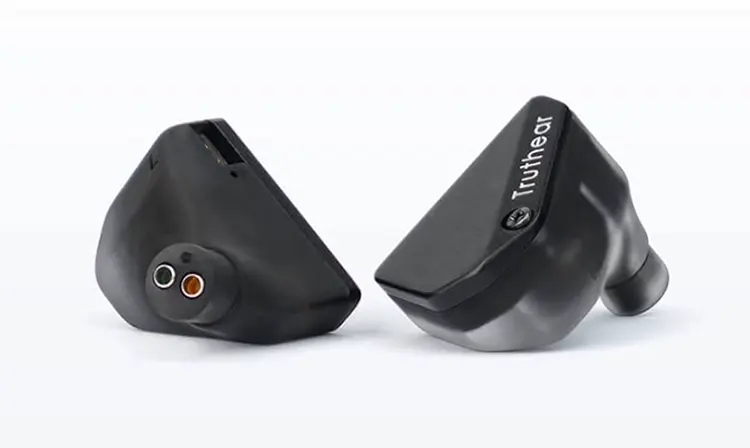
Truthear Hexa
Technical
The Truthear Hexa is a hybrid multi-driver IEM. It uses a 1 dynamic driver and 3 balanced armature driver setup which is commonly seen in higher-end IEMs.
The Hexa has an impedance of 20.5Ω and a sensitivity of 120 dB/Vrms. The Hexa is easy to run on any device with sufficient volume.
Design
The Truthear Hexa has a more modest design. It has the all-black color scheme with the design being the Truthear text engraved and 2 screws on both IEMs.
The shell is made of high-quality medical-grade resin manufactured by HeyGears, who make the shells of the MOONDROP Blessing 3. Its faceplate is metal though not resin or plastic.
There are left and right indicators on the shell. The nozzles are also painted in orange and green.
Lastly, for fit and comfort, the MAY has a smaller size with rounded corners that should be more comfortable than the pointy larger build of the Truthear Hexa.
Performance
The bass experience in the Truthear Hexa is undeniably weak after using the MAY. My music feels dry when using the Truthear Hexa, but using the MAY gives it that weight for a proper note fundamental on the lows.
The mids are cleaner on the Truthear Hexa with improved vocal clarity on the vocals compared to the MAY. Note weight is identical with both of them, but the MAY has more male vocal potency. The Truthear Hexa could use some more midbass though.
For their treble, the detail retrieval is identical as well. The audible difference is mainly their sibilance. The Truthear Hexa has peakiness and unevenness in the treble. It’s not as smooth as the MAY.
Their soundstage and imaging have similar depth, width, and height. It’s above average, but nothing excellent.
Our Verdict
The MOONDROP MAY features good bass, clean mids, and a natural tonality with easy EQ settings within the accompanying app. It will fit most user needs for casual music listening or for those who like a bit of a kick in the lows.
Combined with its small size, excellent cable, and unique unboxing, it’s an IEM that’s hard to ignore at this price point.
MOONDROP MAY Technical Specifications
- Driver Type: One (1x) dynamic driver, one (1x) planar
- Plug: USB Type-C DSP with standard 0.78mm-2pin
- Frequency Response: 7Hz – 39kHz
- Impedance: 30@1kHz
- Sensitivity: 120db/Vrms

